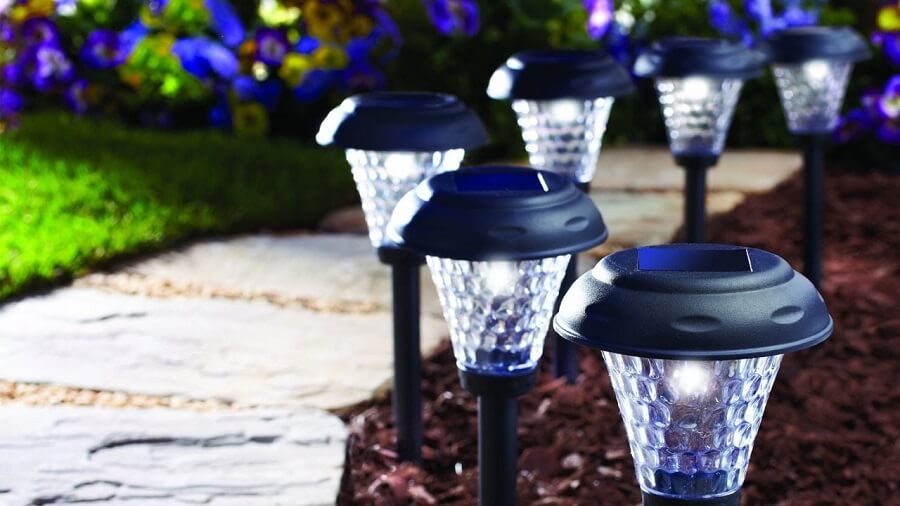Are you considering purchasing a patio heater to extend your outdoor living season? It’s important to know how long these heaters typically last to ensure your investment is worthwhile.
In this article, we will explore the average lifespan of different types of patio heaters and the factors that can affect their longevity. By understanding the signs of wear and tear, you can proactively assess when it’s time to replace your heater.
Additionally, we will provide you with practical tips to extend the lifespan of your patio heater, ensuring both safety and cost-effectiveness.
Finally, we will discuss the proper recycling and disposal options for old patio heaters. With this information, you can make an informed decision and enjoy the cozy warmth of your outdoor space for years to come.
Quick Summary
- The lifespan of patio heaters varies depending on type and maintenance.
- Regular maintenance, such as cleaning and proper storage, can extend the life of a patio heater.
- Harsh weather conditions can accelerate the deterioration of patio heaters.
- Different types of patio heaters, such as portable gas or fixed electric, have different advantages and considerations in terms of heat output, convenience, and gas supply.
Types of Patio Heaters
So, now that you’re curious about the different types of patio heaters, let’s dive into the details and find the perfect one for your outdoor space.
When it comes to choosing a patio heater, you have two main options: portable or fixed. Portable patio heaters are great if you like to move them around and have the flexibility to heat different areas of your outdoor space. They’re typically fueled by either propane or natural gas, which means you’ll need to have a supply of gas on hand.
On the other hand, fixed patio heaters are permanently installed and provide a more consistent and efficient heat source. They’re usually electric and require a dedicated power source.
When deciding between gas and electric patio heaters, there are a few factors to consider. Gas patio heaters, whether portable or fixed, are known for their powerful heat output and can warm up a larger area. They’re also great for outdoor spaces without access to electricity. However, they do require a propane or natural gas supply, which means you’ll need to monitor and refill the fuel.
Electric patio heaters, on the other hand, are more convenient and easy to use. They simply require a power source, and you don’t have to worry about refilling fuel. They’re also generally safer since they don’t produce any open flames or emit carbon monoxide. However, they may not provide as much heat output as gas heaters and are better suited for smaller outdoor areas.
When choosing a patio heater, consider whether you prefer the flexibility of a portable heater or the stability of a fixed one. Additionally, think about whether you have access to a gas supply or if an electric heater would be more convenient for you.
By taking these factors into account, you can find the perfect patio heater that meets your heating needs and ensures a safe outdoor experience.
Factors Affecting Lifespan
To enhance the lifespan of your outdoor heating device, you should take into consideration various factors. One of the most important factors is the maintenance requirements of the patio heater. Regular maintenance can significantly extend the life of your heater. This includes cleaning the heater regularly to remove any debris or dust that can clog the burners and affect its performance. It’s also important to check for any signs of wear and tear, such as rust or loose connections, and address them promptly to prevent further damage.
Another factor that can affect the lifespan of your patio heater is its environmental impact. Exposure to harsh weather conditions, such as rain, snow, and extreme temperatures, can accelerate the deterioration of the heater. To protect your heater, consider investing in a cover that can shield it from the elements when not in use. Additionally, placing the heater in a sheltered area, such as under a gazebo or patio umbrella, can provide extra protection.
By paying attention to the maintenance requirements and taking steps to minimize its environmental impact, you can ensure that your patio heater lasts for a long time. Remember, regular maintenance and proper care are essential for the safety and longevity of your outdoor heating device.
Average Lifespan of Different Patio Heater Types
If you’re looking to maximize the lifespan of your outdoor heating device, it’s important to understand the varying lifespans of different types of patio heaters. This knowledge can help you make an informed decision when purchasing a new patio heater, ensuring that you choose one that will last for a long time.
When it comes to the average lifespan of patio heaters, it can vary depending on the type. Cost-effective patio heaters, such as propane or electric models, typically have a lifespan of around 5-10 years. These heaters are a popular choice due to their affordability and ease of use. However, it’s important to note that their lifespan can be impacted by factors such as weather conditions and maintenance.
On the other hand, energy-efficient patio heaters, such as infrared or radiant heaters, tend to have a longer lifespan of around 10-15 years. These heaters are designed to emit heat directly to objects and people, rather than heating the surrounding air. This makes them more efficient and durable in the long run.
To ensure that your patio heater lasts as long as possible, it’s important to take proper care of it. This includes regular cleaning, checking for any damage or leaks, and storing it properly during the off-season. By following these tips and choosing a patio heater that suits your needs, you can enjoy a cozy outdoor space for many years to come.
Signs of Wear and Tear
If you’ve had your patio heater for a while, there are a few signs of wear and tear you should look out for.
One common issue is rust and corrosion, which can weaken the structure of the heater and make it less effective.
Another sign is reduced heating efficiency, where the heater no longer produces as much heat as it used to.
Lastly, be on the lookout for damaged or malfunctioning parts, as this can affect the overall performance and safety of the heater.
Rust and Corrosion
Rust and corrosion can significantly reduce the lifespan of patio heaters. To prevent rust and ensure the longevity of your heater, regular maintenance is key. Here are some maintenance tips that will help you keep your patio heater in top condition:
| Maintenance Tips | Benefits of Regular Maintenance |
|---|---|
| Clean regularly | Removes dirt and debris that can cause rust |
| Apply rust-resistant paint | Protects the heater from corrosion |
| Store properly | Prevents exposure to moisture and prolongs lifespan |
By following these simple steps, you can prevent rust and corrosion from damaging your patio heater. Regularly cleaning your heater will remove any dirt or debris that can cause rust. Applying a rust-resistant paint will provide an extra layer of protection against corrosion. Lastly, storing your heater properly during the off-season will prevent exposure to moisture, which can also lead to rust and corrosion. Taking these precautions will help ensure the safety and longevity of your patio heater.
Reduced Heating Efficiency
To maximize the effectiveness of your patio heater, make sure you regularly maintain it to prevent any decline in its heating efficiency. Regular heater maintenance is essential to keep your patio heater running efficiently and effectively.
Over time, patio heaters can accumulate dust, debris, and even insects, which can hinder their heating performance. By cleaning the heater regularly and removing any obstructions, you can ensure that it operates at its maximum capacity.
Additionally, consider energy-efficient heating options such as using propane instead of electricity, as propane heaters tend to provide a more cost-effective and eco-friendly heating solution.
By taking these steps and maintaining your patio heater properly, you can enjoy cozy outdoor gatherings for many seasons to come.
Damaged or Malfunctioning Parts
If you notice reduced heating efficiency in your patio heater, it may be a sign of damaged or malfunctioning parts. This can occur over time as the heater is exposed to different weather conditions and regular wear and tear. It’s important to address these issues promptly to ensure the safety and effectiveness of your patio heater.
To determine the specific parts that need replacement, it’s helpful to refer to the manufacturer’s manual or consult a professional. Additionally, regular maintenance can help prolong the lifespan of your patio heater. Here are some maintenance tips to consider:
- Clean the heater regularly to remove any debris or dust that may affect its performance.
- Check for loose or damaged parts and tighten or replace them as needed.
- Inspect the gas connections for any leaks and ensure they are properly sealed.
- Store the heater properly during the off-season to protect it from harsh weather conditions.
By following these replacement options and maintenance tips, you can enjoy a safe and efficient patio heater for years to come.
| Replacement Options | Maintenance Tips | Safety Measures |
|---|---|---|
| Check for damaged or malfunctioning parts | Clean the heater regularly | Ensure proper gas connections |
| Refer to manufacturer’s manual or consult a professional | Check for loose or damaged parts | Store properly during off-season |
| Replace parts as needed | Inspect gas connections for leaks | Keep away from flammable materials |
| Ensure safety features are in place | Store properly during off-season | Keep children and pets away |
| Regularly inspect and maintain the heater | Protect from harsh weather conditions | Use in well-ventilated areas |
Tips to Extend the Lifespan
One effective way to prolong the lifespan of your patio heaters is by regularly cleaning and maintaining them. Proper maintenance techniques and cleaning methods are crucial to ensure the safety and longevity of your patio heaters.
To start, it’s important to clean the patio heater regularly to prevent the accumulation of dirt, dust, and debris. Use a soft brush or cloth to gently wipe off any dirt from the surface of the heater. Avoid using harsh chemicals or abrasive materials that can damage the finish.
Additionally, it’s essential to inspect and clean the burner and pilot assembly. Remove any dirt or debris that may have collected on them, as this can affect the performance and efficiency of the heater. Use a brush or compressed air to clean these parts thoroughly.
Furthermore, check the gas supply lines and connections for any leaks or damage. It’s recommended to use a solution of soapy water to detect any leaks. If bubbles form when the solution is applied to the connections, there may be a leak, and it should be repaired immediately.
Lastly, ensure that the patio heater is stored in a dry and protected area when not in use. This will prevent rusting or damage caused by exposure to harsh weather conditions.
By following these maintenance techniques and cleaning methods, you can significantly extend the lifespan of your patio heaters while ensuring the safety of your outdoor area.
Can Orchids Survive Outdoors as Long as Patio Heaters Last?
Can orchids survive outdoors as long as patio heaters last? Well, it depends. While orchids are delicate and typically flourish indoors, some hardy species can withstand outdoor conditions. However, the keyword how long orchids live outdoors does not necessarily dictate their longevity. Factors like climate, care, and species play vital roles in determining how well orchids thrive in outdoor settings.
When to Replace Your Patio Heater
Now that you know how to extend the lifespan of your patio heater, it’s important to be aware of when it’s time to replace it. Regular maintenance and care can help prolong the life of your heater, but eventually, signs of deterioration may start to appear. These signs can indicate that it’s time to invest in a new patio heater for the safety of yourself and others.
One of the first signs to look out for is a decrease in heat output. If your heater isn’t providing the same level of warmth as before, it could be a sign that the burner or heating element is wearing out. Additionally, if you notice visible damage such as rust or corrosion, it’s a clear indication that the heater is no longer functioning optimally.
Regularly inspecting your patio heater for these signs of deterioration is crucial for maintaining a safe outdoor environment. It’s also important to follow the manufacturer’s guidelines for maintenance and care to ensure the longevity of your heater. By staying vigilant and addressing any issues promptly, you can enjoy the warmth and comfort of your patio heater for years to come. Take a look at the table below for a quick reference on signs of deterioration and recommended maintenance.
| Signs of Deterioration | Recommended Maintenance |
|---|---|
| Decreased heat output | Check burner or heating element for wear and tear |
| Rust or corrosion on the surface | Clean and treat affected areas to prevent further damage |
| Gas leaks or irregular flame | Inspect gas connections and replace any damaged parts |
Remember, your safety and the safety of those around you should always be a priority.
Recycling and Disposal Options
When it comes to recycling and disposing of your patio heater, there are several options available to you. It’s important to follow proper disposal regulations to ensure the safety of both yourself and the environment.
One option is to check with your local waste management agency to see if they offer recycling programs for patio heaters. These programs often have specific guidelines on how to properly prepare and package your heater for recycling. By participating in these programs, you can help reduce the environmental impact of disposing of your patio heater.
If your local waste management agency doesn’t offer a recycling program for patio heaters, another option is to find a scrap metal recycler in your area. Many patio heaters are made of metal, which can be recycled and reused. Contact these recyclers to inquire about their acceptance policies and any specific requirements they may have.
When disposing of your patio heater, it’s important to never throw it in the regular trash or dump it in a landfill. Patio heaters contain various components and materials that can be hazardous if not properly handled. By following proper disposal regulations and recycling options, you can ensure the safe and environmentally-friendly disposal of your patio heater.
Frequently Asked Questions
Can I use my patio heater indoors?
Yes, you can use a patio heater indoors, but only if it is specifically designed for indoor use. Indoor patio heaters have safety features that make them suitable for indoor environments and differ from outdoor patio heaters in terms of construction and fuel source.
What are the most common causes of wear and tear in patio heaters?
The most common causes of wear and tear in patio heaters are corrosion and the impact of extreme temperatures. These factors can compromise the safety and functionality of the heater over time.
Is it safe to leave a patio heater unattended?
Leaving patio heaters unattended can pose safety concerns. It’s important to never leave them on when no one is around. Always turn them off and ensure they are properly stored to prevent any accidents.
How often should I clean and maintain my patio heater?
To ensure safety, clean and maintain your patio heater regularly. Experts recommend cleaning it at least once every season. Follow manufacturer’s instructions, inspect for damage, and check gas connections for leaks.
Are there any safety tips I should follow when using a patio heater?
To ensure safety when using a patio heater, follow these tips: 1) Regularly perform patio heater maintenance, including cleaning and checking for any issues. 2) Store the heater properly when not in use to prevent accidents.
Conclusion
In conclusion, patio heaters can last for several years with proper care and maintenance. The average lifespan of different types of patio heaters varies, but regular use and exposure to the elements can affect their longevity.
By looking out for signs of wear and tear, following tips to extend their lifespan, and knowing when to replace them, you can ensure that your patio heater lasts as long as possible.
Remember to also consider recycling and disposal options when it’s time for a new one!








